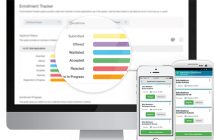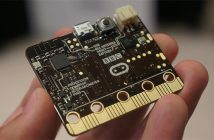
According to an annual report released by EducationSuperHighway, a nonprofit whose goal is to increase Internet access to public schools across the country, the number of students who have access to high-speed broadband in their classrooms has grown tremendously over the last two years and has reached an additional 20 million students since 2013.
In 2013, only 30% of school districts across the nation were in compliance with the Federal Communications Commission’s minimum Internet access goal of 100kbps per second per student. At the same time, 40 million students were left without the broadband necessary to make use of computer programs, tablets and other online-based materials used for curriculum purposes, writes Lauren Camera for US News.
The updated “State of the States Report” discovered that since that time, an additional 20 million students have gained broadband access and are adequately connected. 77% of districts are now meeting standards, which represents 59% of schools in the country as well as 53% of students.
Newly released data also found that close to 1.7 million teachers now have the broadband access necessary to make use of digital learning tools, in comparison with the fewer than 300,000 that had that access in 2013.
The large increase is thought to be the result of a three-pronged effort, including a $1.5 billion boost cap of the FCC’s E-Rate program. President Obama’s administration has also spent time discussing the issue through its ConnectED initiative while EducationSuperHighway has been working with governors, school districts, state-level officials and service providers to help fill the gaps in Internet access.
“This phenomenon occurred where people bought a lot of devices and found out they didn’t work because they didn’t have a lot of broadband,” Marwell says. “The FCC making the money available really made a difference. The program was maxed out.”
Improvements were also made to the affordability of broadband, bringing the average cost from $22 per megabit per second down to $11 per Mbps.
The report discovered a number of states doing well at ensuring their schools had Internet access. Hawaii and Wyoming were found to have 100% of school districts connected, South Dakota 98%, and Connecticut and Maine each had 97% of school districts connected.
However, 23% of school districts throughout the country were found to be short of the minimum Internet access goal, which left 21 million students without enough connectivity. This was found to be especially true of rural areas, where 21% of schools were found to not have enough connectivity compared to 5% of schools in urban areas.
Marwell said the goal is to close the remaining gap by 2020, stressing that this would only happen if state governors are on board, adding that the group offers a number of programs to assist governors determine their needs and create a strategy to upgrade the current system used in schools.
To date, 38 governors have already committed to ensuring that 100% of students in their states have complete connectivity for digital learning opportunities.
The group also recently received a $20 million donation from Mark Zuckerberg in an effort to personalize learning so that students can learn at their own pace.
“One day we’ll connect the world and provide personalized learning for all students, and we’ll keep focusing on this until that happens,” Zuckerberg wrote in his Facebook post.




